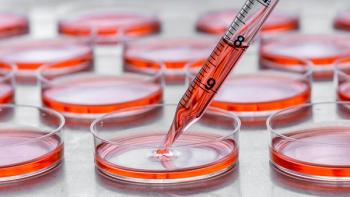
- BioPharm International-12-01-2012
- Volume 25
- Issue 12
Discovery Pipeline: Understanding Cellular Reprogramming
Recent research examines the sequence of events underlying cellular reprogramming, which may aid in better control of the production of induced pluripotent stem cells.
A publication in the Nov. 21, 2012 issue of Cell examines the mechanisms underlying the reprogramming of somatic to become induced pluripotent stem cells (IPSCs). IPSCs have engendered much excitement as potential tools for disease modeling or for regenerative medicine, but the methods used to produce them are inefficient and time consuming, limiting their commercial potential.
The method pioneered by Shinya Yamanaka of Kyoto University, which earned him a Nobel Prize, involves adding four transcription factors, Oct4, Sox2, Klf4, and c-Myc, to a somatic cell, usually a skin cell (i.e., fibroblast). A team of scientists from the University of Pennsylvania looked at where on the chromatin those factors were bound 48 hours after transfection to understand the sequence of events that leads to reprogramming. They found that Oct4, Sox2, and Klf4 bound enhancer regions of the chromatin distant from the genes they regulate. The authors suggest that these transcription factors act to open closed chromatin structures, allowing transcription machinery to access the DNA. C-Myc appeared to act by enhancing the binding of the other factors to the chromatin.
The researchers also found large regions of the genome where the transcription factors would not bind at 48 hours, but which were activated at a later time. The DNA-binding proteins, called histones, associated with the refractory regions were found to be chemically modified with a modification called H3K9me3. Moreover, blocking the enzyme that produced the H3K9me3 modification was found to accelerate the reprogramming process.
By understanding cellular reprogramming at the genetic level, scientists will be able to better control the process.
Source: A. Soufi, G. Donohue, and K. Zaret, Cell online, DOI:0.1016/ j.cell.2012.09.045, Nov.15, 2012.
Articles in this issue
about 13 years ago
BioPharm International, December 2012 Issue (PDF)about 13 years ago
Bioanalytical Methods for Sample Cleanupabout 13 years ago
Report from South Koreaabout 13 years ago
When Disaster Strikes at Homeabout 13 years ago
Research Policies Pose New Challenge for US Administrationabout 13 years ago
Patents and Postapproval Batch Testingabout 13 years ago
Navigating Emerging Marketsabout 13 years ago
Glycan Analysis: A PrimerNewsletter
Stay at the forefront of biopharmaceutical innovation—subscribe to BioPharm International for expert insights on drug development, manufacturing, compliance, and more.




